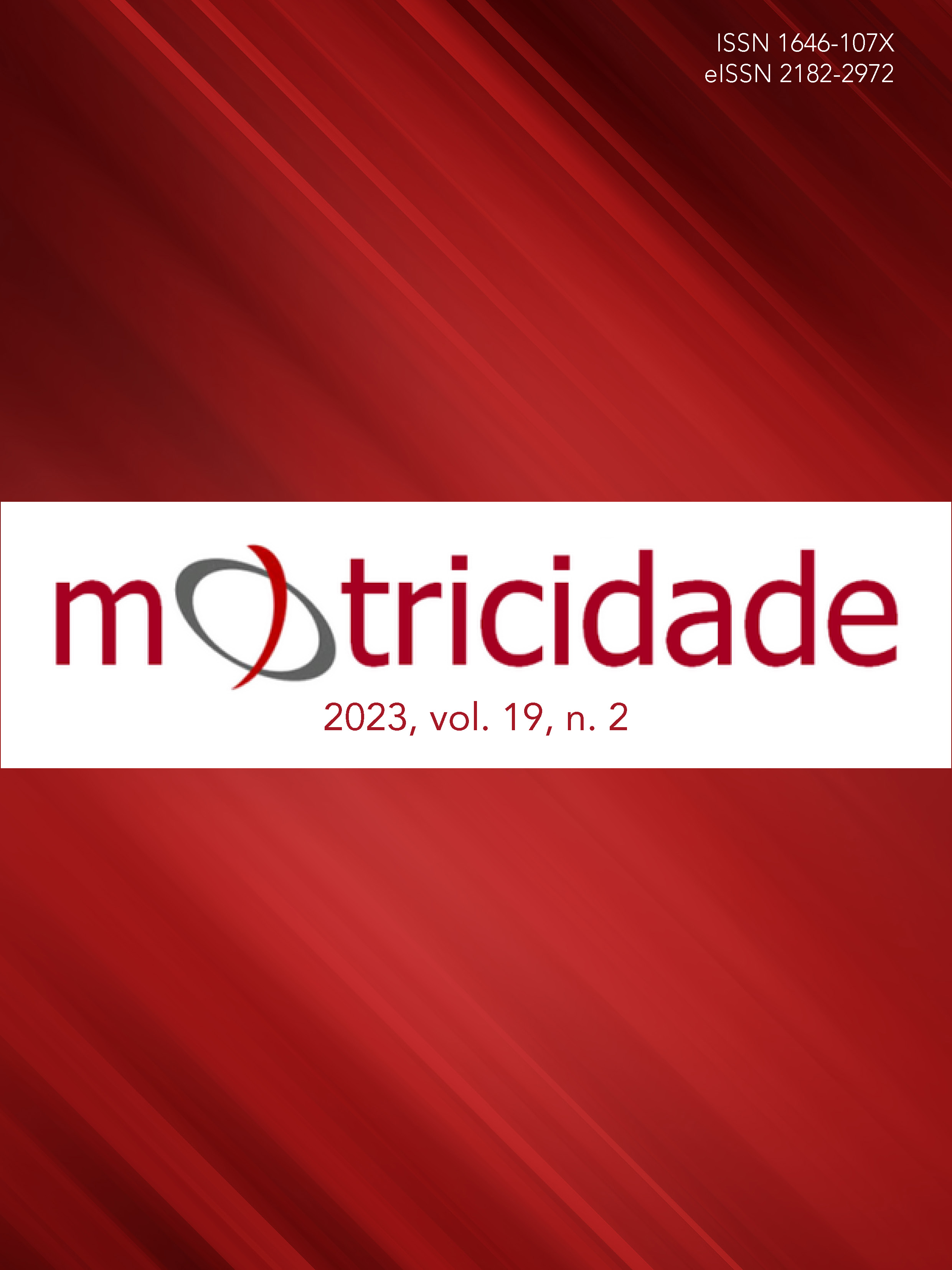The effect of an intermittent protocol on strength performance in female football players: an exploratory study
DOI:
https://doi.org/10.6063/motricidade.32173Keywords:
Soccer, Fatigue, Evaluation, Laboratory, Countermovement JumpAbstract
Football is a sport that involves a combination of continuous and intermittent effort. Therefore, players need to be able to recover quickly between moments of high intensity to continue to perform at a high level of output throughout the entire match. The present study aimed to evaluate the effect of an intermittent exercise protocol on the rate of high-intensive force production through the countermovement test (CMJ) in elite Portuguese female soccer players. The sample consisted of 12 players from the first division of women's football in Portugal (Age = 18.1 ± 0.9 years; Weight = 60.10 ± 5.8 Kg; Height = 1.63 ± 4.8 cm; BMI = 22.48 ± 1.5 kg/m2). The players performed an intermittent exercise protocol on a cycle ergometer, lasting 8 minutes, in which each minute corresponded to 40 seconds of high-intensity (4W/kg, based on the player's body weight) and 20 seconds of low-intensity (75W). Before and after the protocol, the players performed the CMJ. Through the results obtained, it was possible to observe that players presented a significant decrease in the height of the CMJ between the two moments (before- 29.92 ± 3.55cm vs after- 26.92 ± 4.05cm; p < 0.01). The present study allowed us to conclude that intermittent exercise protocol promoted a negative influence on CMJ performance.
Downloads
Published
Issue
Section
License
The authors of submitted manuscripts must transfer the full copyright to Journal Motricidade / Sílabas Didáticas Editions. Granting copyright permission allows the publication and dissemination of the article in printed or electronic formats, and copyrights start at the moment the manuscript is accepted for publication. It also allows Journal Motricidade to use and commercialise the article in terms of licensing, lending or selling its content to indexation/abstracts databases and other entities.
According to the terms of the Creative Commons licence, authors may reproduce a reasonable number of copies for personal or professional purposes, but without any economic gain. SHERPA/RoMEO allows authors to post a final digital copy (post-printing version) of the article on their websites or on their institutions' scientific repository.


